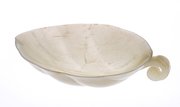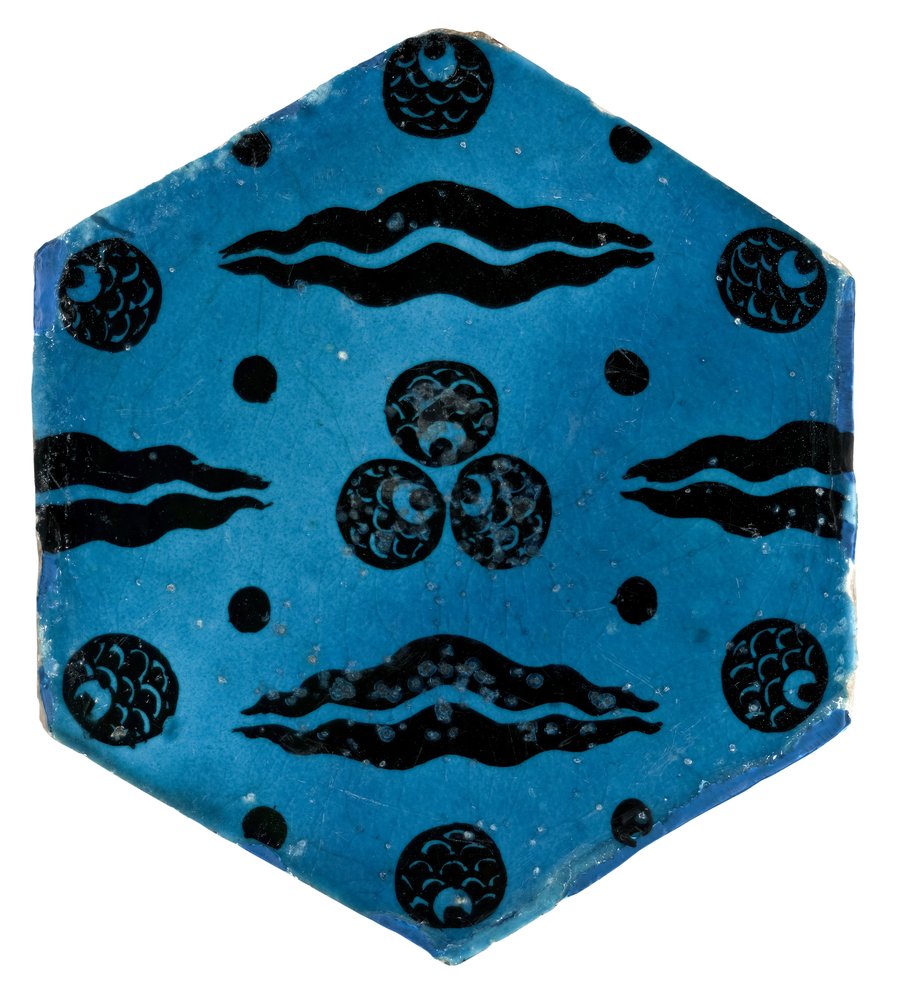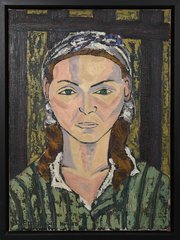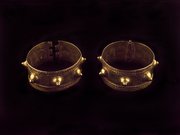
Hexagonal Iznik Tile with Çintamani Motifs
Museum of Islamic Art
- Title:
- Hexagonal Iznik Tile with Çintamani Motifs
- Production place:
- Turkey
- Date:
- 1500 - 1599
- Period:
- Ottoman
- Title:
- Hexagonal Iznik Tile with Çintamani Motifs
- Production place:
- Turkey
- Date:
- 1500 - 1599
- Period:
- Ottoman
- Material:
- Fritware, Pigment, Glaze
- Technique:
- Underglaze painting, Glazing
- Dimensions:
- 26 × 3 cm
- Diameter:
- 26.0 cm
Hexagonal tiles were widely produced in 9th-10th century AH/15th and 16th century CE Turkey and Syria, where they were used to decorate walls of various buildings including mosques and palaces. This richly decorated hexagonal tile was produced in Turkey or Syria during the second half of the 10th century AH/16th century CE. It was probably used as part of a wider wall decoration, such as those seen in situ in the Rustem Pasha Mosque, Istanbul (built between 968-971 AH/1561-63 CE). The tile has a turquoise blue background with Çintamani motifs in black that are divided by paired black wavy lines. Çintamani means ‘auspicious jewel’ in Sanskrit, and in Buddhist iconography the motif represented auspicious flaming pearls. However, in the Ottoman context, the circles and wavy stripes are associated with tiger stripes and leopard spots, a symbol of power and courage. This motif is often found in textiles, manuscripts and ceramics.



